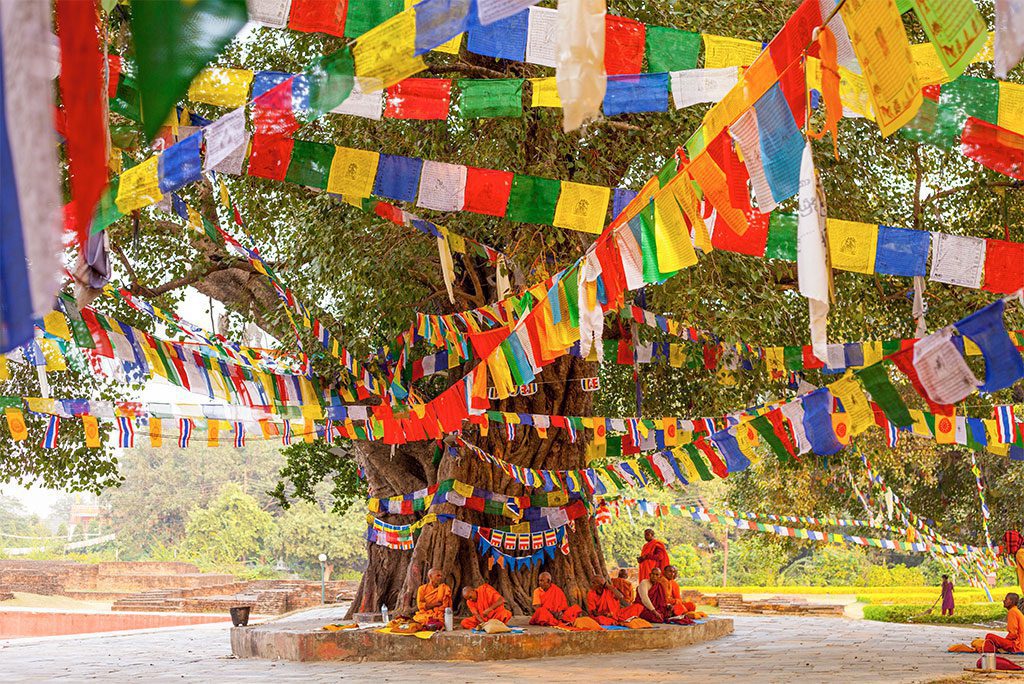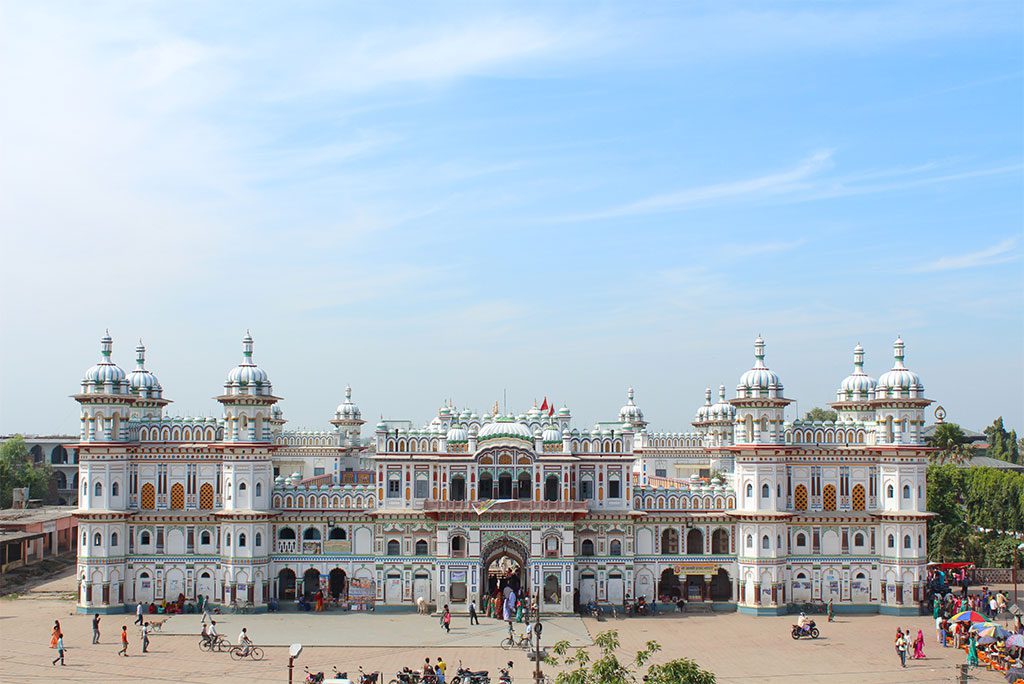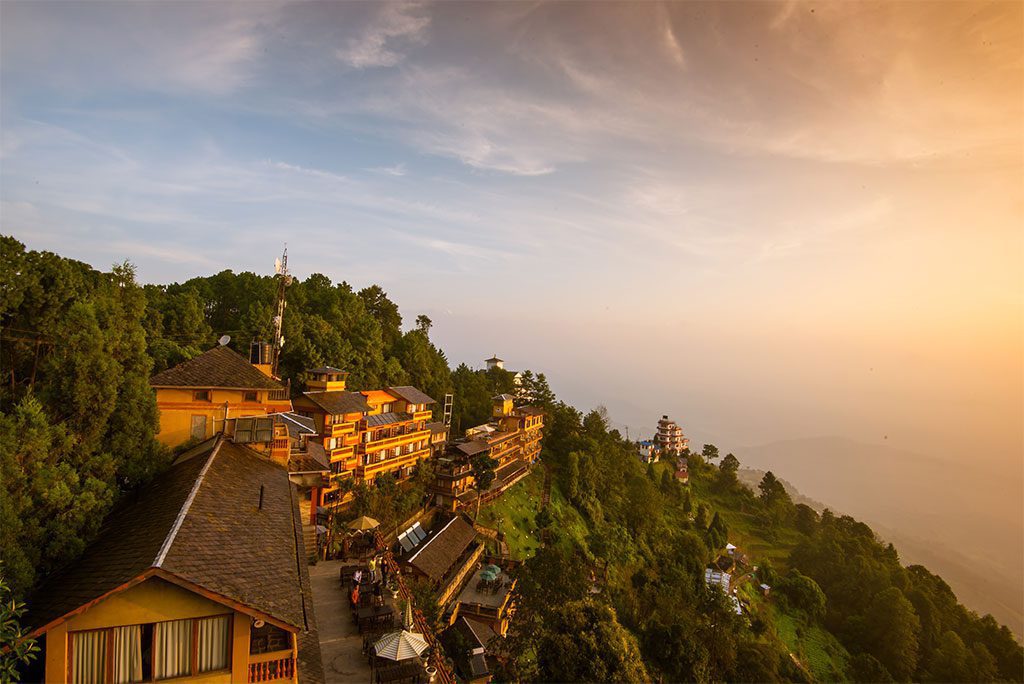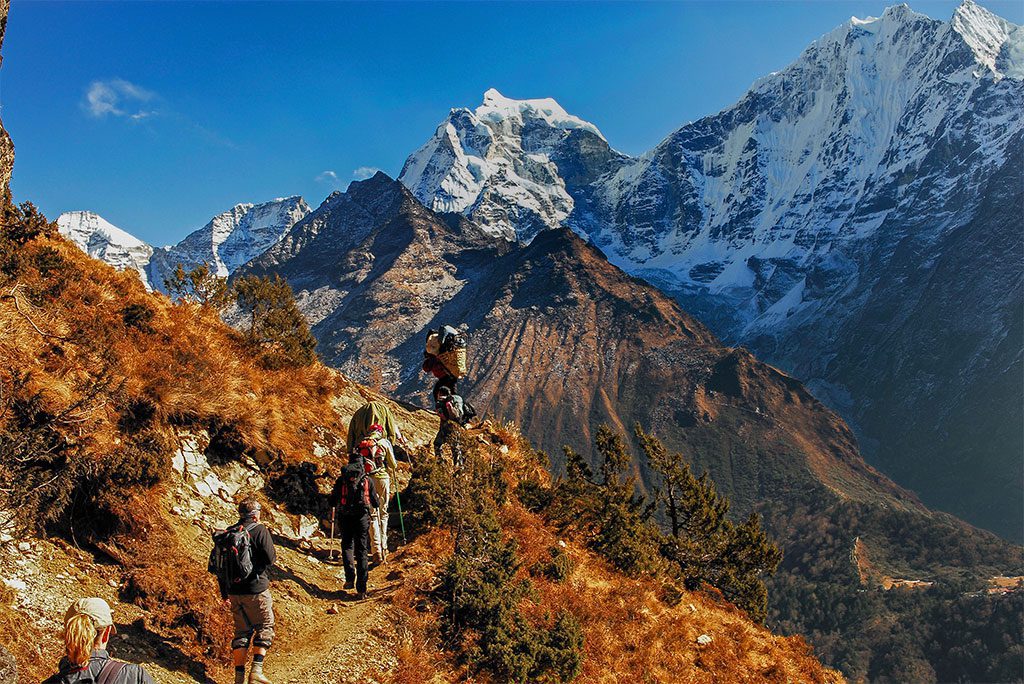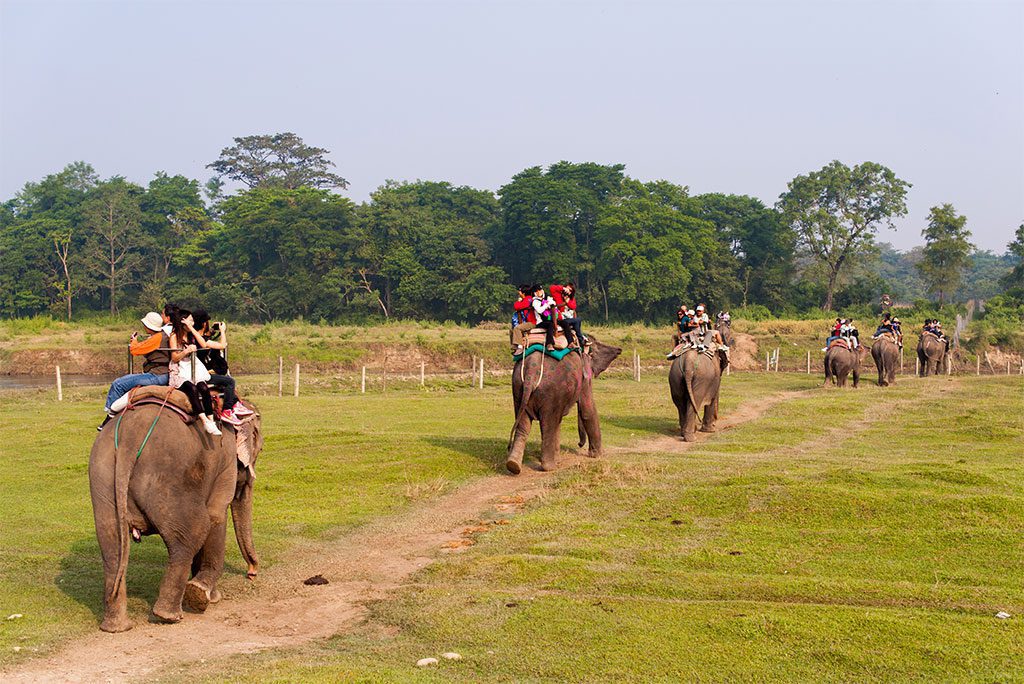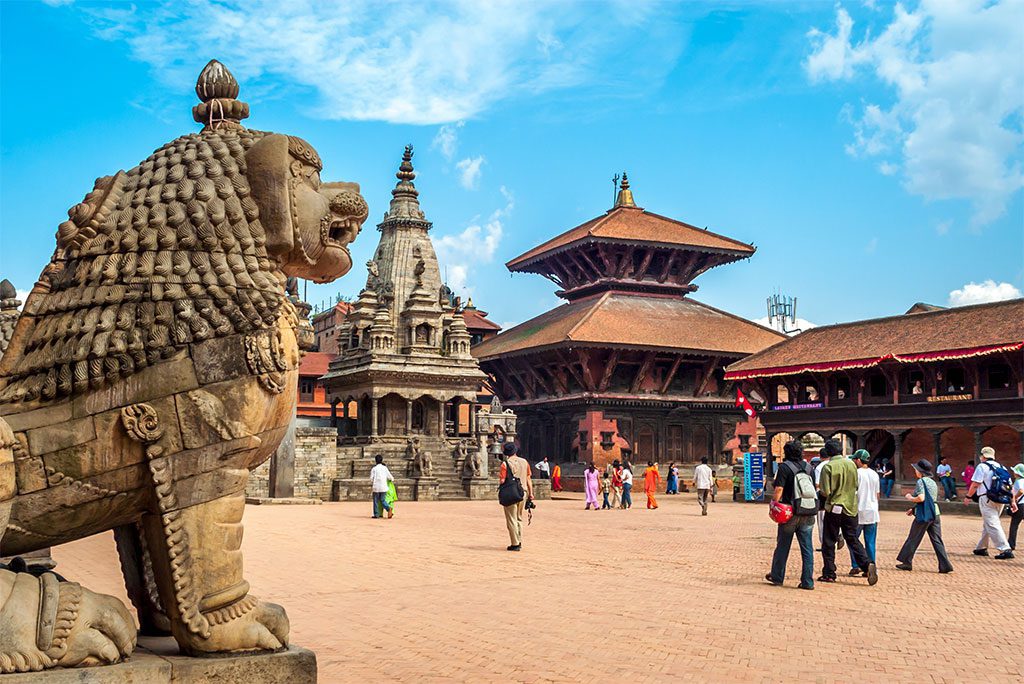Trekking up Everest or seeing Buddha’s birthplace are just two of the numerous reasons why Nepal is so popular among tourists. Located between China and India in South Asia along the Himalayan mountain range, the nation is home to some of the world’s most varied environments, from snow-capped mountains to subtropical rainforest. Ancient temples and shrines, a plethora of vibrant festivals, and a wealth of unique goods make up the diverse cultural landscape of Nepal.
This nation has more to offer tourists than can be seen in a single trip, from high-octane adventures like climbing and paragliding to quiet strolls through ancient temples and opulent castles. Here’s a rundown of some of Nepal’s top attractions:
10. Lumbini
Lumbini, the historic birthplace of Siddhartha Gautama, Lord Buddha, is visited by large numbers of Buddhist pilgrims each year. The fabled site is frequented by historians, archaeologists, and interested onlookers for its wealth of pre-Islamic artefacts, some of which date back to 550 B.C.
Maya Devi, Buddha’s mother, gave birth to him under a tree in this garden, which is now home to a shrine dedicated to her. Several monasteries, holy ponds, meditation centres, and cultural institutions fill the heart of a tiny park planned by Japanese architect Kenzo Tange.
9. Janakpur
Janakpur, in southwestern Nepal on the Terai plains, was the ancient capital of the Indian kingdom of Mithila, and the Maithili culture is still very much alive and well there. Thousands of Hindus from all over the globe go to Janakpur every year to commemorate the anniversary of Lord Ram and Sita’s (also known as Janakiwedding ) at the temple of Janaki Mandir.
The marble building dates back to the 19th century and is the tallest and biggest temple in Nepal, with 60 rooms over three stories. More than a hundred holy springs and ponds dot the peaceful city of Janakpur.
8. Nagarkot
Nagarkot is well known for its breathtaking views of the Himalayas and the Kathmandu Valley, making it the ideal destination for those who want to appreciate the region’s natural splendour without subjecting themselves to strenuous physical exertion. The settlement, with a population of around 4,500, is situated on a hill to the northeast of Bhaktapur and offers spectacular views of eight different Himalayan mountains.
Nagarkot is renowned as the best site in Nepal to see the sun rise over the Himalayas, and as a result, it is home to a wide choice of attractive hotels in all price ranges.
7. Khumbu
Thousands of intrepid tourists visit Khumbu, in northeastern Nepal, each year with the hope of making the trip to the top of Mt. Everest. Hikers start at the Lukla airfield and follow a well-defined, two-lane path to Everest Base Camp.
Khumbu, predominantly located inside Sagarmatha National Park, is where most expeditions to the Himalayan peaks begin. It is here, in the Sherpa settlement of Namche Bazaar, that most climbers begin their ascent. The Tengboche Monastery, the most important Buddhist institution in the nation, is also found in the Khumbu. A wide range of luxurious rooms are at your disposal at the monastery, many of which look out over the world’s highest peak.
6. Chitwan National Park
Chitwan National Park, located in south-central Nepal, is one of the greatest places to see wildlife in all of Asia. The park provides much-needed protection for endangered animals like the Bengal tiger and the one-horned rhinoceros.
Elephants, leopards, Indian bison, rhinoceroses, and sloth bears are just some of the unique animals that visitors to the park have the opportunity to get up close and personal with. In addition to the standard car excursions, the park also offers jungle hikes, elephant rides, and canoe trips. At the park’s edge, you’ll find opulent hotels, while in the adjacent town of Sauraha, you may find more reasonably priced options.
5. Pokhara

Witness the breathtaking view of the Annapurna Mountain range reflected in the serene Phewa Lake in Pokhara, Nepal. Image source: My Good Images/Shutterstock.com
Pokhara is a prominent resort town that draws visitors from all over the globe because of its beautiful lakes, grassy shorelines, and surrounding mountains. The lakeside city gives relief to tired trekkers and chances for outdoor pleasures like paddle-boat excursions and white-water rafting, and is known as the entrance to the Annapurna range in northwest Nepal.
Phewa Lake, the biggest of Pokhara’s three lakes, is bordered on all sides by high-end lodgings, eating establishments, and retail outlets. Almost every weekend, worship services are performed in a temple on an island in the lake that is devoted to the goddess Barahi Bhagwati.
4. Patan
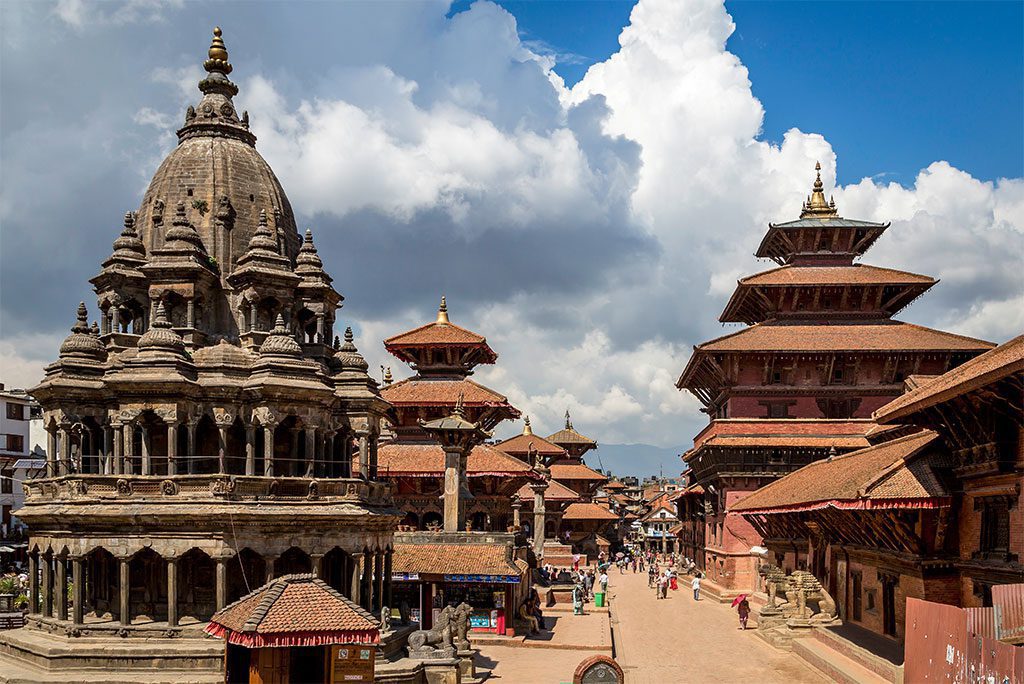
Immerse yourself in the rich heritage of Patan Durbar Square, one of the architectural wonders of the Kathmandu Valley. Image source: Hakat/Shutterstock.com
Patan, the city across the Bagmati River from Kathmandu, is renowned not just for its Newari architecture but also for the skilled craftsmanship of its residents. The Patan Durbar, a collection of palaces, courtyards, and temples constructed in the 17th century, is one of the city’s most visited landmarks.
The freshly rebuilt stone Krishna Temple, with its multi-column façade and gilded spires, is especially impressive, as is the courtyard in Sundari Chowk, which has an ornately carved sunken bath. Beautiful handmade silk saris, long worn only by Nepal’s nobility and kings, can be found in several stores across Patan.
3. Bhaktapur
Bhaktapur, one of the three historic capitals of the Kathmandu Valley, was severely damaged but has since been restored. Thankfully, the City of Devotees’ primary attractions—its many sacred temples and shrines—suffered very little damage.
In contrast to the hustle and bustle of Kathmandu, Bhaktapur’s historic squares, meandering lanes, and pedestrian-only thoroughfares inspire slow strolls and exploration. The city’s 55-Window Palace, a 15th-century building that dates back to Durbar Square (also known as “noble court”), is a must-see attraction.
2. Annapurna Circuit
In northwest Nepal, the Annapurna Circuit provides trekkers with an unparalleled wilderness adventure. The traditional trip takes adventurers high into the Himalayas, through plunging gorges, across barren plateaus, and into lush subtropical valleys studded with terraced farms, all while showcasing the region’s diverse landscapes. There are a number of beautiful villages and holy landmarks along the route.
Most trekkers start their route slightly east of Pokhara and end it near Jomsom Airport, saving themselves around three weeks of walking. The Annapurna Sanctuary Trek is a shorter option, taking just 8–12 days, but it is no less stunning. This is a very well-known trip in Nepal, and until you reach the very top, you should expect to stop for tea and a snack every hour or so.
1. Kathmandu
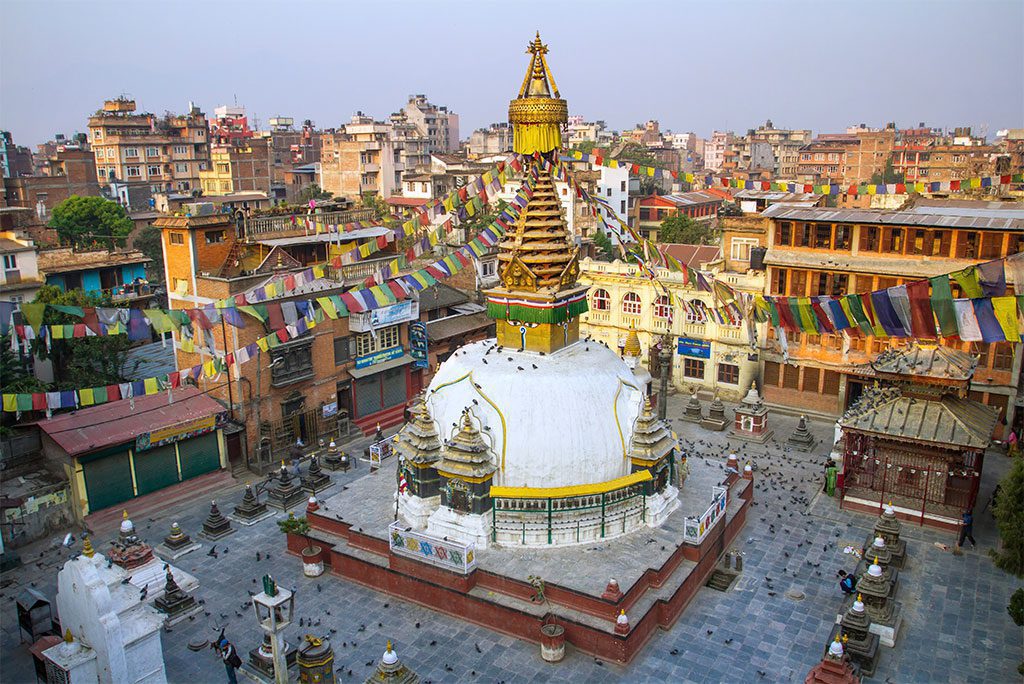
Discover tranquility and spiritual serenity at Kathesimbu Stupa. Image source: Mazur Travel/Shutterstock.com
Since all international flights into Nepal arrive at Kathmandu International Airport, the cultural hub of the country, this is also where most tourists’ travels in Nepal begin. Kathmandu is a bustling city with over a million residents, and it is home to a wide variety of businesses catering to tourists, including trekking companies, hotels, restaurants, and artisan workshops.
Durbar Square, the city’s most renowned landmark, is presently being repaired after the recent earthquakes, but the area around it still has many interesting sights to see. The ancient Buddhist structure of Swayambhunath, perched high above the Kathmandu Valley’s verdant valley floor, is a must-see. The Swapna Bagaicha, often called the Garden of Dreams, is another hotspot for tourists. If you’re seeking a peaceful retreat from the chaos of Kathmandu, you’ve found the right location.


